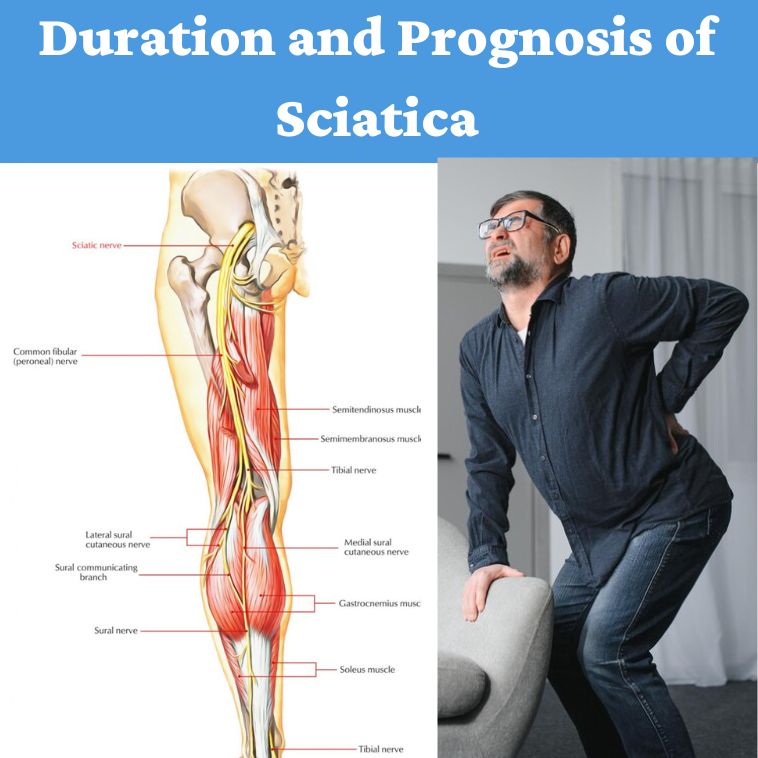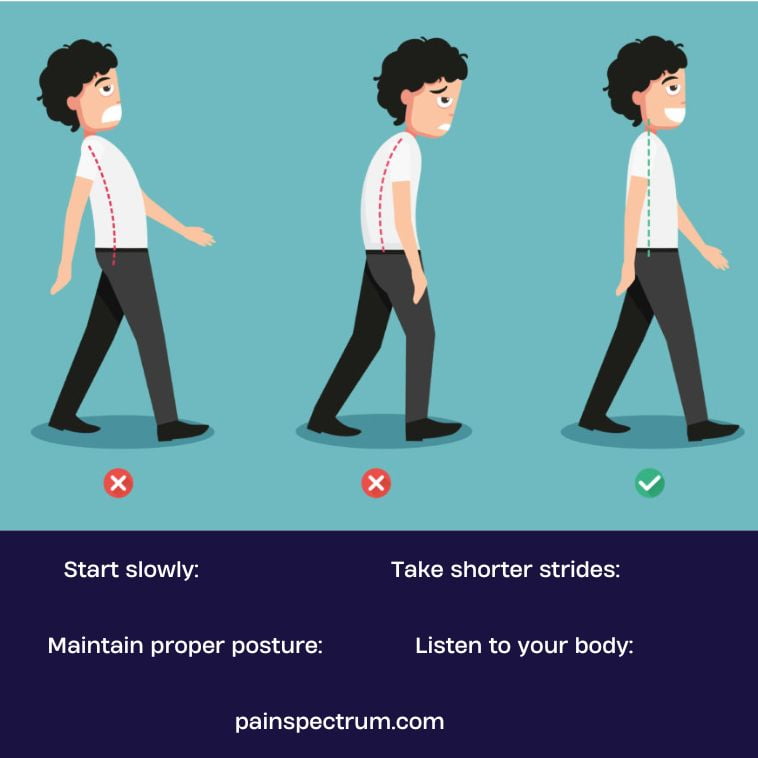
How to Get Rid of Sciatica Pain Permanently 2024
Last updated on December 7th, 2025 at 08:24 am
Sciatica is a condition that causes pain radiating along the path of the sciatic nerve, which is the longest nerve in your body. It typically starts in your lower back and travels down through your buttocks and the back of your leg. Sciatica Pain Permanently can be effectively managed through a combination of natural remedies and professional treatments. It typically manifests as discomfort originating in the lower back, extending through the buttocks, and down the back of the leg. This pain varies greatly, ranging from a dull ache to a sharp, burning sensation, profoundly impacting daily life and mobility.
Table of Contents
Symptoms and Causes of Sciatica Pain
| Symptoms | Causes |
|---|---|
| Strong, shooting pain in the lower back | Herniated Disc: When the cushion-like discs between the spinal bones bulge out and press on the nerve. |
| Tingling or numbness in the buttocks or legs | Spinal Stenosis: When the spinal canal narrows, putting pressure on the nerve roots. |
| Weakness or difficulty moving the affected leg | Degenerative Disc Disease: Wear and tear on spinal discs, leading to herniation and nerve compression. |
| Radiating pain down one leg | Piriformis Syndrome: Irritation of the sciatic nerve by a muscle in the buttocks. |
| Difficulty sitting or standing for prolonged | Trauma or Injury: Accidents or injuries that harm the spine or its surrounding tissues. |
Duration and Prognosis of Sciatica

How Long Does Sciatica Last?
The duration of sciatica pain varies greatly. It may last a few days or weeks for some, while for others, it may persist for months or even years, depending on the underlying cause and how well it is managed.
Can Sciatica Get Better on Its Own?
In some cases, sciatica pain may improve over time, especially if caused by a minor injury or inflammation. However, seeking medical advice is crucial if the pain persists or worsens, as untreated sciatica can lead to long-term complications.
Strategies for Immediate Relief from Sciatica Pain

Identifying the Source of Your Pain
Consulting with a healthcare professional can help pinpoint the specific source of your pain, such as a herniated disc or muscle tightness, and guide you toward the most effective treatment options.

- Lie on your back with your knees bent and feet flat on the floor.
- Cross your right ankle over your left knee, forming a figure-four shape.
- Reach behind your left thigh and gently pull towards your chest until you feel a stretch in your right buttock and hip.
- Hold for 20-30 seconds, then switch sides and repeat.
Non-Surgical Approaches for Sciatica Pain Relief
Non-surgical approaches for sciatica pain relief include stretching and gentle exercise, releasing muscle tension through techniques like massage or heat therapy, improving core and back strength, physical therapy, chiropractic care, acupuncture, over-the-counter medications, epidural steroid injections, transcutaneous electrical nerve stimulation (TENS), and mind-body techniques such as yoga and meditation.
Long-Term Solutions for Sciatica Pain
Find the Root Cause
Identifying the underlying cause is crucial for developing a long-term treatment plan. Diagnostic tests such as MRI scans or X-rays can help pinpoint issues like herniated discs or spinal stenosis.
Surgical Options
- Chiropractic Care: Chiropractic adjustments focus on realigning the spine to alleviate pressure on the sciatic nerve, providing relief from Sciatica Pain Permanently without the need for surgery.
- Yoga and Stretching: Engaging in regular yoga sessions and stretching exercises can help improve flexibility, reduce muscle tension, and alleviate Sciatica Pain Permanently by promoting proper spinal alignment.
- Acupuncture: Acupuncture involves the insertion of thin needles into specific points of the body to stimulate energy flow and alleviate pain, offering a natural and holistic approach to managing Sciatica Pain Permanently.
- Herbal Remedies: Certain herbs like turmeric, ginger, and devil’s claw have anti-inflammatory properties that can help reduce inflammation and ease Sciatica Pain Permanently when incorporated into your daily regimen.”
Complementary Therapies
Chiropractic Care: Chiropractic care involves spinal adjustments and soft tissue therapy to relieve pressure on the sciatic nerve.

Yoga Poses: Incorporating yoga poses such as Pigeon Pose, Child’s Pose, Cat-Cow Stretch, and Downward-Facing Dog into your daily routine can significantly help manage Sciatica Pain Permanently. These poses stretch key muscles, increase flexibility, and relieve tension, providing natural and effective relief from sciatic nerve compression.
Home Remedies and Lifestyle Modifications
- Hot or Cold Packs: Put a warm towel or a cold pack on the painful area for 15-20 minutes. It helps to reduce swelling and ease the pain.
- Gentle Stretching: Try an easy stretching exercise to loosen up tight muscles and ease the pressure on your sciatic nerve. Yoga poses like the pigeon pose or gentle twists can be helpful.
- Massage: Ask someone to gently massage the painful area. It can help relax your muscles and make you feel better.
- Herbal Remedies: Some herbs like turmeric and ginger have natural anti-inflammatory properties. You can try adding them to your food or taking them as supplements.
- Essential Oils: Using essential oils like lavender or peppermint can provide relief. Mix a few drops with a carrier oil and massage it on the painful area.
- Good Posture: Make sure to sit and stand up straight. Use a chair with good support for your back, and take breaks if you’ve been sitting for a while.
- Stay Active: Gentle exercises like walking or swimming can help strengthen your muscles and reduce pain. And try to maintain a healthy weight too.
- Relaxation Techniques: Stress can make sciatica pain worse, so try deep breathing or meditation to relax your mind and body.
- Get Plenty of Rest: Make sure you’re getting enough sleep at night, and try to rest during the day if you need to. Your body needs time to heal.
- Healthy Eating: Eating a balanced diet with lots of fruits, vegetables, and healthy fats can help reduce inflammation and ease pain.
Best Creams for Sciatica Pain:
| Cream/Brand | Type | Benefits |
|---|---|---|
| Voltaren Gel | NSAID | Reduces inflammation and pain |
| Capsaicin Cream | Pain Reliever | Reduces pain |
| Lidocaine Cream | Local Anesthetic | Numbs the area |
Application Tips:
- Patch Test: Always perform a patch test with a new cream to ensure you don’t have an allergic reaction.
- Clean Skin: Apply to clean, dry skin to enhance absorption.
- Avoid Broken Skin: Do not apply to broken or irritated skin.
- Follow Instructions: Always follow the specific product’s instructions for use and consult with a healthcare provider if you have any concerns or experience adverse reactions.
Tips for Walking with Sciatica:
Walking is a beneficial form of exercise for managing sciatica pain, but it’s essential to do so with proper technique and precautions. Here are some tips for walking comfortably with sciatica:

- Start slowly: Begin with short walks and gradually increase the duration and intensity as tolerated.
- Maintain proper posture: Keep your head up, shoulders back, and abdomen engaged while walking to promote proper spinal alignment and reduce strain on your lower back.
- Take shorter strides: Avoid overstriding, as this can increase pressure on your lower back and aggravate sciatica pain. Instead, take shorter, more frequent steps.
- Listen to your body: Pay attention to how your body feels while walking and stop if you experience increased pain or discomfort. It’s essential to find a balance between staying active and avoiding activities that exacerbate your symptoms.
Sitting Comfortably with Sciatica:
- Use a supportive chair: Opt for a chair with excellent lumbar support to preserve the natural curve of your spine and alleviate strain on your lower back, contributing to relief from Sciatica Pain Permanently.
- Take frequent breaks: Every 30 minutes, stand up, stretch, and walk around to relieve pressure on your spine and prevent stiffness, promoting better comfort and mobility for those dealing with Sciatica Pain Permanently.
- Adjust your posture: Maintain proper posture by sitting up straight with your shoulders back and feet flat on the floor. Avoid crossing your legs to prevent exacerbating sciatica pain, thereby supporting efforts to manage Sciatica Pain Permanently.
- Use a cushion or lumbar roll: Place a cushion or lumbar roll behind your lower back to provide additional support and maintain proper spinal alignment while sitting, aiding in the alleviation of discomfort associated with Sciatica Pain Permanently.”
Preventive Measures for Managing Sciatica Pain Permanently
Maintaining Good Posture: Poor posture exacerbates Sciatica Pain Permanently. Sit and stand up straight, keeping your shoulders back, spine aligned, and feet flat. Avoid slouching, especially during prolonged periods of sitting.
Regular Exercise: Engaging in regular exercise is crucial for managing Sciatica Pain Permanently. Exercises such as walking, swimming, or yoga help strengthen muscles, support the spine, and reduce the likelihood of injury. Strengthening core muscles also provides vital support for the spine and alleviates pressure on the sciatic nerve.
Implementing a Stretching Routine: A daily stretching routine is essential for managing Sciatica Pain Permanently. Focus on stretches targeting the lower back, hips, and legs, such as the hamstring stretch, piriformis stretch, and spinal twist. Regular stretching prevents muscle tightness and minimizes the risk of sciatica flare-ups.
Maintaining a Healthy Weight: Maintaining a healthy weight is critical for minimizing Sciatica Pain Permanently. Excess weight adds strain to the spine, worsening sciatica pain. Embrace a balanced diet rich in fruits, vegetables, lean proteins, and whole grains to support overall health and reduce inflammation.
Practicing Proper Lifting Technique: Employing proper lifting techniques is essential to prevent exacerbating Sciatica Pain Permanently. When lifting heavy objects, bend your knees, keep your back straight, and lift with your legs instead of your back. Avoid twisting your spine while lifting and keep heavy objects close to your body to minimize strain on back muscles.
Prioritizing Stress Management: Managing stress effectively is crucial for mitigating Sciatica Pain Permanently. High-stress levels exacerbate muscle tension and increase pain sensitivity. Practice stress-reducing techniques such as deep breathing, meditation, or mindfulness to promote relaxation and alleviate the impact of stress on the body.
Regular Check-ups with Healthcare Provider: Regular check-ups with your healthcare provider are essential for monitoring and managing Sciatica Pain Permanently. Your healthcare provider can offer guidance on effective pain management strategies, monitor your progress, and make necessary adjustments to your treatment plan.
Incorporating Natural Methods: Embracing natural methods is key to managing Sciatica Pain Permanently. These include maintaining good posture, engaging in regular exercise, implementing a stretching routine, maintaining a healthy weight, practicing proper lifting techniques, prioritizing stress management, and scheduling regular check-ups with your healthcare provider.
By adopting these natural approaches, you can effectively alleviate sciatica pain and improve your overall well-being in the long term.
FAQs
What is the most successful treatment for sciatica?
The most successful treatment depends on the individual’s condition. It may include physical therapy, chiropractic care, medications, or surgery.
What foods should you avoid with sciatica?
Avoid processed foods, sugary snacks, and foods high in saturated fats to reduce inflammation.
How do I get my sciatic nerve to stop hurting?
Engage in gentle stretching, apply heat or ice, take over-the-counter pain relievers, and seek professional help for personalized treatment.
Conclusion:
Sciatica Pain Permanently can be effectively managed through a combination of lifestyle modifications, complementary therapies, and preventive measures. By incorporating natural strategies such as chiropractic care, yoga, and home remedies into your routine, you can find relief from sciatica symptoms and significantly improve your overall quality of life.
Reference: How To Cure Sciatica Permanently


